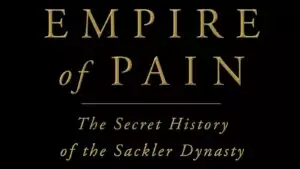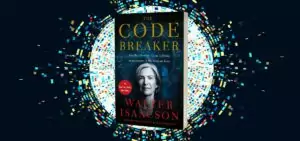By Sam Burt

✅ AI Essay Writer ✅ AI Detector ✅ Plagchecker ✅ Paraphraser
✅ Summarizer ✅ Citation Generator
The 21st century will be Asia’s century, but it won’t necessarily be an Asian century; this seems to be the take-home message of Pankaj Mishra’s sweeping book, which ‘seeks to offer a broad view of how some of the most intelligent and sensitive people in the East responded to the encroachments of the West (both physical and intellectual) on their societies’. He argues that the political and economic resurgence of Asia does not signal the triumph of familiar ‘Asian’ or ‘western’ values, but an eclectic mix of political ideologies that were forged during the struggle to overcome western imperialism.
At the outset, Mishra informs us that: ‘The form of this book—part historical essay and part intellectual biography—is primarily motivated by the conviction that the lines of history converge in individual lives.’ (p10) I am therefore reviewing it in two parts. First, the ‘historical essay’: Mishra’s narrative covers the period from the arrival of Napoleon in Egypt in 1798 to 2011’s protests in Tahrir Square against Mubarak’s rule. In his telling of ‘the remaking of Asia’, the crucial shift on the part of the Asian intelligentsia is the move from an exclusively elite-oriented to a more mass-based model of modernisation; the Ottoman rulers’ Tanzimat decree and the Qing Dynasty’s ‘Hundred Days’ reform period are examples of the former, whilst the founding of the Islamic Republic of Iran and the People’s Republic of China are cited as examples of the latter.
What the book does superbly is to convey the enormous diversity and complexity of the Asian response to the West. Nevertheless, since Mishra’s two central respondents – Rabindranath Tagore and Liang Qichao – travelled and lectured widely, it is possible to discern some general themes. Above all, it was the ‘great speed of change’ unleashed by encounters with the West that shook these societies to their roots:
‘They knew that borrowing technical skills through a modern system of education from Europe wasn’t enough; these borrowings brought with them a whole new way of life. They demanded an organised mass society whose basic unit was the self-reliant individual who pursues his economic self-interest while progressively liberating himself from…communal solidarities—a presupposition that threatened to wreck the old moral order.’ (p301)
When initial efforts to harness the power of western science were obstructed by domestic reactionaries, perceptive Asian thinkers identified the cause of Europe’s hegemony in its ‘superior skills for ‘industrial civilisation’ or, more simply, organisation.’ (p40) Over successive generations of inquisitive Asian respondents, we can observe an incremental shift in their focus from the instruments of ‘Europe’s competitive edge’ to its capacities for national mobilisation. The example of post-Meiji Japan, scaling ever-greater heights on the world stage, helped to foster the influential idea that countries needed a revolutionary vanguard, united by a political ideology, which would establish common institutions to mobilise the masses and develop a powerful national identity. Early in the twentieth-century, vanguardism, nationalism, and regionalism were the dominant trends, cutting across national boundaries and conventional left-right divisions.
Western imperialism had already created an unprecedented sense of global interconnectivity. From that point forward, uncompromising conservative responses made little sense (which isn’t to suggest that they disappeared overnight). This was especially true given the pervasive intellectual influence of Social Darwinism, which contributed to the powerful impression of a historically-unique existential threat to the traditional moral order in Asian societies. Under these circumstances, who were the true revolutionaries and who the true conservatives: those who sensed the opportunity that lay in post-war European pessimism and self-doubt, and sought to present their interpretations of traditional Asian values as an alternative for the West to follow (often presented as being compatible with rationalism and science); or pragmatists who sought to imitate the West as far as they could without provoking a backlash from traditionalist quarters?
Mishra is at his best when dissecting the historical specificity of Asian responses to Western encroachment. By setting his intellectual biographies firmly in the context of a historical essay, he makes it possible for the reader to see the politics that lies at the heart of so much modern thinking about ‘multiculturalism’; in particular, by tracing the seminal role that religious authorities often played in debates over modernisation, often for historically-specific reasons, we can see how ‘tradition’ was, and is, used as a cover for political agendas.
As regards Mishra’s ‘intellectual biographies’, however, the book falls short in two key respects. First, Mishra repeatedly fails to indicate whether he is expressing his own views or paraphrasing the views of others. For instance, on p255:
‘Gandhi could see how the unprecedented disasters of the modern age—the Western scramble for colonies in Asia and Africa, the world wars between rival nations and empires, the rise of totalitarianism—worked out the nihilist logic of a purely secular and materialistic outlook…nation-states with economies built around the endless multiplication of individual desires are likely to wage the most destructive wars in order to maintain their chosen ways of life.’
Should we infer from this that Mishra shares Gandhi’s critique of modern Western civilisation? This is finally affirmed when Mishra sets out his stall in the concluding sections, but the effect of this is to cast doubt on the preceding presentation of unfamiliar thinkers: were we reading a fair summation of their arguments, or merely those aspects which supported the author’s line?
Second, this reviewer did not find the author’s line to be persuasive or, curiously, in keeping with the spirit of the rest of the book. It does not help that Mishra saves his diagnosis of the present, and his prescriptions, until the very end, so that they feel more like tagged-on afterthoughts than a set of beliefs which were probably undercurrents throughout his historical essay. Besides the aforementioned retrospective doubt this is likely to engender in the lay reader (for whom the book is intended), it also makes it difficult to pin down exactly what Mishra is advocating.
What he seems to say is that we have to turn our backs on a notion of universalism: that we can find universally-valid principles for how to live and what to value. According to Mishra, we have to abandon that notion because in practice, it serves to mask hierarchy; but his fundamental point seems to be less, that it creates a hierarchy of values (ie, he is not denying the possibility that, if all of humankind were so convened, some values would be found preferable to others) than that it publicises and makes transparent such a hierarchy. In that sense, his argument is a pragmatic one: universalism is inherently self-destructive because it breeds violent resentment among those who espouse unpopular views.
In a familiar vein, he writes (pp280-281): ‘Millenarian Islam has a special appeal among Muslims in the West who are convinced that their host countries are moral as well as political failures and who now look to Islam for new sources of moral and religious authority in their secular surroundings. […] Islam remains a gigantic powder key, likely to blow up at any time.’
A counter-argument to this might be that liberalism, in its universalist incarnation, is capable of self-restraint: majority rule doesn’t extend to matters of incommensurable value, where people are left free to live their lives as they wish. However, at this point in the argument, Mishra appears to sympathise with critics of the West such as Tagore, whom he earlier cites (p231): ‘Again and again in his writings, Tagore returned to the metaphor of modern civilisation as a machine: ‘The sole fulfilment of a machine is in achievement of result, which in its pursuit of success, despises moral compunctions as foolishly out of place.’ Japan, Tagore wrote, could further the ‘experiments…by which the East will change the aspects of modern civilisation, infusing life in it where it is a machine, substituting the human heart for cold expediency.’
From this perspective, the modern West is crippled by its deficit of spirituality; the irresistible impulse to materially satisfy individual desires is without limits, rendering liberalism’s claim to ‘tolerance’ a facade. Yet Mishra sees a way out of this trap: the environment (pp309-310):
‘The hope that fuels the pursuit of endless economic growth—that billions of consumers in India and China will one day enjoy the lifestyles of Europeans and Americans—is as absurd and dangerous a fantasy as anything dreamt up by Al-Qaeda. It condemns the global environment to early destruction and looks set to create reservoirs of nihilistic rage and disappointment among the hundreds of millions of have-nots.’
The point is stated so bluntly, as if no further justification was required, that we can only assume this is how Mishra proposes we escape from the trap that universalism has become. In short, an appeal to undeniable facts about the detrimental impact of advanced capitalism on the survival prospects of humankind will bring forth a kind of ‘global consciousness’ (which Mishra elaborates on elsewhere) that allows us to recognise radically different cultures and value systems as being equally valid. Once westernising elites (in the East and in the West) are compelled by scientific evidence to concede the impossibility of replicating the Western model of society and economy everywhere else, a paradigm shift will occur in their thinking, which presumably heralds the global victory of multiculturalism over universal ideals. He is not advocating a return to a lost past, ‘when the West merely denoted a geographic region, and other peoples unselfconsciously assumed a universal order centred on their values’ (p9).
I do not have space here to interrogate this account in detail, but it makes numerous questionable assumptions about, for example: the relationship between tolerance and offence; the ability of science to answer fundamental value questions; and the ideological flexibility of capitalism. Essentially, Mishra attempts to extend the logic of anti-colonial thinkers and activists like Frantz Fanon to the present day:
‘Modern European imperialism would be wholly unprecedented in creating a global hierarchy of economic, physical and cultural power through either outright conquest or ‘informal’ empires of free trade and unequal treaties. […] [T]he European subordination of Asia was not merely economic and political and military. It was also intellectual and moral and spiritual: a completely different kind of conquest than had been witnessed before, which left its victims resentful but also envious of their conquerors’ (pp42-45).
But whereas earlier generations of anti-colonial and postcolonial thinkers had strove to replace a morally defunct form of universalism—what Mishra describes in an inter-war context as ‘racially segregated liberalism’—with something better, a synthesis of the respective strengths of different civilisations (which often translated into variants of socialism), Mishra acknowledges that this no longer seems fashionable:
‘The rise of Asia…is in many ways the revenge of the East. Yet this success conceals an immense intellectual failure… It is simply this: no convincingly universal response exists today to Western ideas of politics and economy, even though these seem increasingly febrile and dangerously unsuitable in large parts of the world’ (p306).
Yet he insists that the unsustainable nature of western practices negates the imminence of the ‘end of history’; rather, history will only end when countries with different political and economic systems, rooted in different value systems, are unified by a ‘global consciousness’ that enables them to recognise each other as different, but equally legitimate, endpoints. This is, after all, a book intended to help its readers ‘to understand the world not only as it exists today but also how it’s continuing to be remade not so much in the image of the West as in accord with the aspirations and longings of formerly subject peoples.’ (p8) Elsewhere, Mishra writes that the book ‘does not seek to replace a Euro-centric or West-centric perspective with an equally problematic Asia-centric one. Rather, it seeks to open up multiple perspectives on the past and the present.’ (p8) Exploring multiple perspectives is a noble endeavour, but, absent some clear criterion for comparison, it all too often feels like a succession of lost opportunities.
Moreover, it is worth asking whether ‘global consciousness’ is too woolly an idea to form the basis of a viable international order. Mishra himself seems sceptical of earlier attempts to build Pan-Asian movements around fuzzy concepts: ‘Thus ended the dream of a regenerated Asian spiritual civilisation. Certainly ‘spirituality’ had proved too vague a word; it could readily indicate the warrior spirit of the samurai as well as the self-control of the Brahman.’ (p240) If we regard the practical interpretation of scientific evidence about the environment as being more open-ended than Mishra presents it, then his whole notion of liberation through limitation may appear a poor substitute for the international political movements of the recent past, and the universal ideals that kept them going (perhaps Mishra’s cause is best captured by the European Union’s motto: united in diversity).
Even with the facts in hand, it is a fantasy to expect that those who reject universalism—or who advocate its violent and oppressive forms—will be converted without the conscious efforts of human beings to persuade them. From the Ruins of Empire, beyond all the great names, famous battles, and obscure sects that adorn its pages, can perhaps be read as a defence of the importance of argument and debate, or, at the very least, critical engagement. More importantly, examining an historical range of alternative perspectives on modernity might help us to be more critical about how we categorise the diversity of responses we encounter in the present.
—————–
This was written under a Creative Commons License, with edits: https://creativecommons.org/licenses/by/1.0/
Follow us on Reddit for more insights and updates.





Comments (0)
Welcome to A*Help comments!
We’re all about debate and discussion at A*Help.
We value the diverse opinions of users, so you may find points of view that you don’t agree with. And that’s cool. However, there are certain things we’re not OK with: attempts to manipulate our data in any way, for example, or the posting of discriminative, offensive, hateful, or disparaging material.